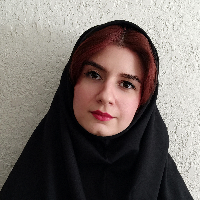Feasibility study of the presence of traditional sewing in fourth-generation universities in Iran with a futures research approach
The field of traditional sewing, as a subset of industrial arts, is one of the most important and extensive sections of applied arts and cultural traditions in all civilizations throughout history. At the same time, the industrialization of products and the indiscriminate use of machines in recent centuries in the field of textiles and clothing-related decorations have marginalized the traditional aspects of this art. Given that today, industrial arts along with historical monuments and natural attractions by recounting cultural and social features as part of the creative cultural industries, are complementary to the growth of the tourism industry, the revival of traditional sewing and production in this area with a look at the future will lead to economic development and job opportunities. Therefore, the present study aims to investigate the impact of the traditional field of tailoring on entrepreneurship, job creation and tourism and to look at the continuation of this art in the future; Recognizes the necessary conditions and facilities in the field of formal education and answers the following questions: 1. What is the effect of the presence of traditional sewing in universities and scientific education centers on productive employment, entrepreneurship and creative tourism? 2. What conditions and facilities are necessary for the presence of this field in the formal education environment and fourth-generation university systems? This research is qualitative in terms of what; It is practical in terms of purpose and descriptive-analytical in nature. Data were collected through documentary studies and library resources simultaneously with the field method (interview and observation) and based on a futures research approach. The findings of this study show that the presence of traditional sewing in future universities will provide employment and prosperity for the tourism industry and will lead to the revival of many jobs related to this art. One of the most important scenarios that can be proposed to achieve this result is the publication of a codified encyclopedia of traditional sewing as a scientific reference and teaching resource in this field and the harmonization of its teaching method in scientific centers, creating a specialized museum, holding domestic and foreign exhibitions, creating a national trade :union:. To support and guide artists and producers, the exchange of information between artists and the remove all existing barriers to research, production and sales. Production of creative products, use of target markets, correct use of modern technology and machinery, development of tourism and adequate productivity of traditional production workshops; are the result of the presence of this field in the fourth-generation universities. This is possible with the support of managers and officials from veteran and interested artists who have worked hard for years to preserve and introduce this field and have valuable experiences to pass on to the next generation.
-
Structural Analysis and Comparison of Concepts in Safavid and Contemporary Engraving Works
Marjan Faghfouri *,
Journal of Iranian Handicrafts Studies, -
The Comparison of the Grotesque Painting of Mohammad Siah Qalam With the Otherworldly Characters of the Literary Text of Shahnameh Ferdowsi
Fatemeh Bazyari *, Madineh Agheli,
Journal of Industrial Arts, -
A Comparative Study on the Motifs and Types of Needlework in the Clothing of Men and Women of the Qajar Court
, *, Mehdi Khanke
Journal of Iranian Handicrafts Studies,



